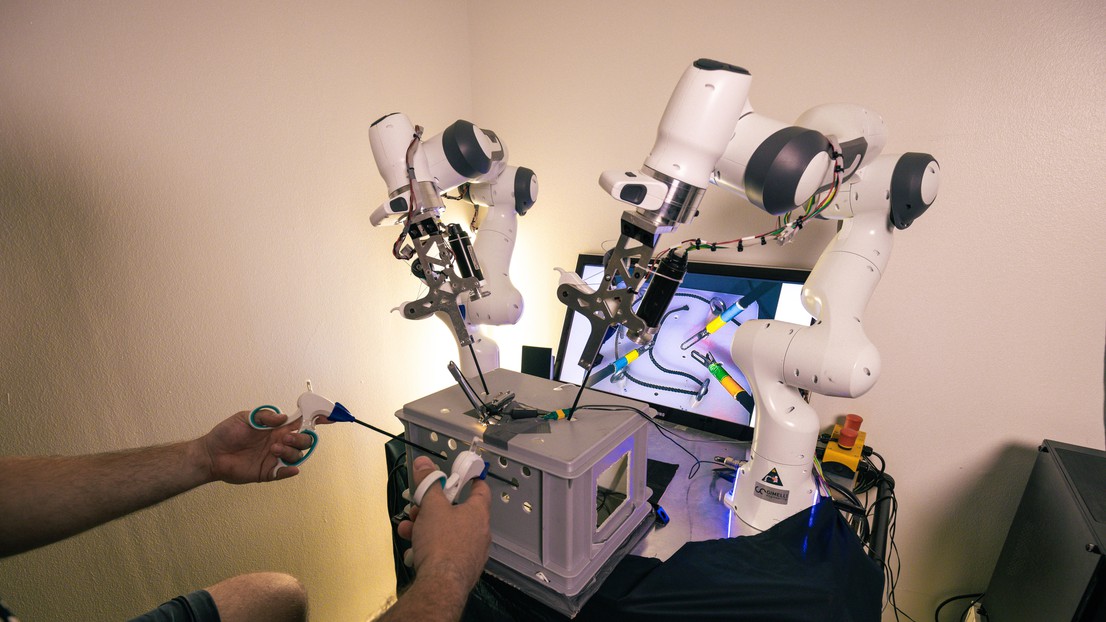Tokyo (SCCIJ) – Researchers at the Swiss Federal Institute of Technology in Lausanne (EPFL) have developed a four-arm robotic-assisted surgery system. It is considered an unprecedented advancement in the realm of laparoscopic surgery.

Robot-assisted surgery from Switzerland: four arms are better than two (© 2023 EPFL).
Haptic foot interface
In a tight collaboration between the research group REHAssist and the Learning Algorithms and Systems Laboratory (LASA), Ph.D. students Jacob Hernandez and Walid Amanhoud and a team of researchers developed the system.
It allows surgeons, in addition to their two natural arms, to control two additional robotic arms using haptic foot interfaces with five degrees of freedom. Each hand controls a manipulative instrument, while one foot controls an endoscope/camera, and another foot controls an actuated gripper.
One key innovation of this system lies in the shared control between the surgeon and the robotic assistants. The control framework developed by the researchers ensures that the surgeon and robots can work collaboratively within a concurrent workspace while meeting the precision and safety demands of laparoscopic surgery.
The results confirm the feasibility of the setup for reducing surgeon workload and improving precision and safety. Specialists have already been successfully trained on the system and clinical trials are ongoing in Geneva.
Minimize fatigue
Mohamed Bouri, head of the group REHAssist, says, “Our system opens up new possibilities for surgeons to perform 4-handed laparoscopic procedures, allowing a single person to do a task that is usually performed by two, sometimes three people.”
“Actuators in the foot pedals give haptic feedback to the user, guiding the foot towards the target as if following an invisible field-of-forces, and also limit force and movement to ensure that erroneous feet movements do not endanger the patient.” Bouri continues.
Known as shared control, the robotics sometimes lead the surgeon’s control of the instrument as they predict where the surgeon wants to move. When tying a knot with a surgical thread, for example, the endoscope adjusts into the proper position and the gripper could move out of the way.
A comprehensive user study with practicing surgeons was conducted to evaluate the system’s ease of use and effectiveness. According to Dr. Enrico Broennimann, who has participated in the trials in collaboration with the Swiss Foundation for Innovation and Training in Surgery, “The idea to actively use one’s feet to perform robotic-assisted surgery is a good idea, and it’s a learnable skill. I’d like to see it implemented in the operating room, perhaps as a cockpit well away from the patient to increase ergonomics.”
Text: Michael David Mitchell/EPFL (Editing by SCCIJ)





























